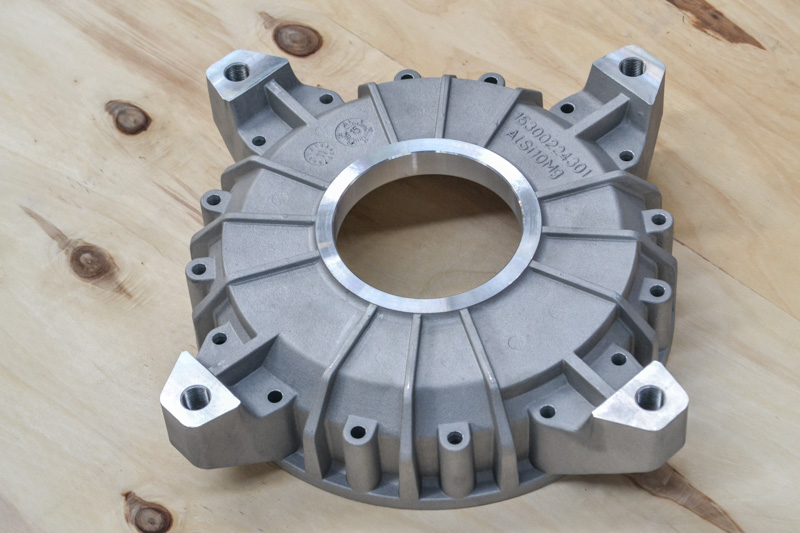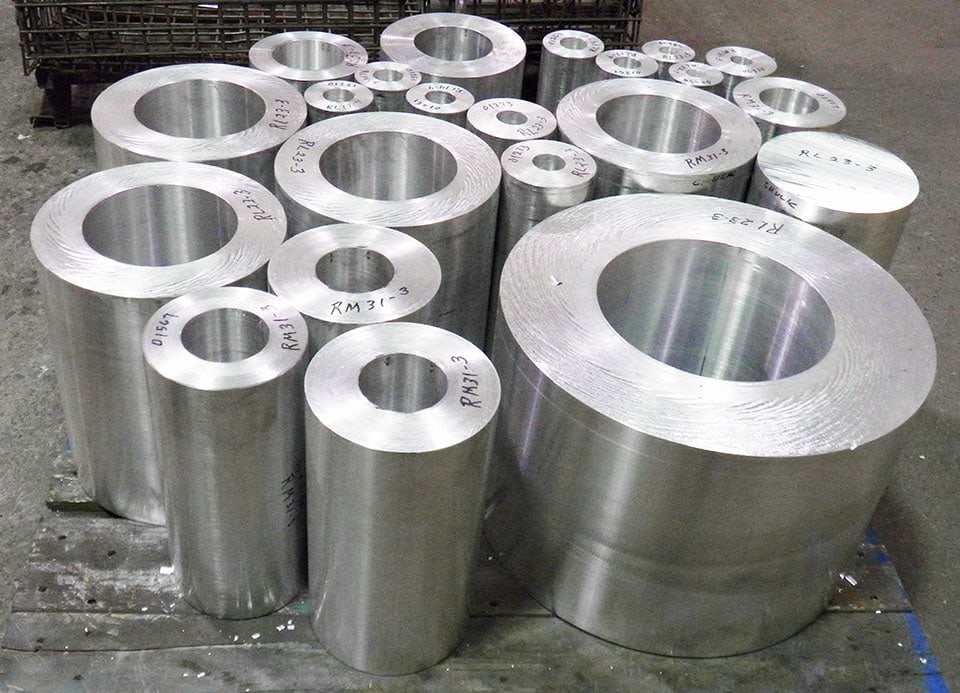Aluminum Foundry and Wisconsin Aluminum Foundry: creating a strong future
Everything About Aluminum Castings: Comprehending Their Function and Importance in Manufacturing
Light weight aluminum spreadings are indispensable to contemporary manufacturing, using a blend of light-weight homes and longevity. They assist in complex designs while lessening setting up expenses. Industries such as aerospace and vehicle frequently use these parts for enhanced performance. The production of light weight aluminum spreadings is not without its challenges. Understanding the subtleties of this procedure reveals both the benefits and possible pitfalls. Exploring these elements will certainly offer deeper understandings into their expanding importance.
Summary of Aluminum Spreading Processes
Aluminum casting procedures play a vital duty in production, using convenience and performance. These procedures involve putting molten light weight aluminum right into mold and mildews to create precise shapes and components. Numerous strategies are utilized, including sand casting, die spreading, and investment casting, each distinguished by its technique of mold production and the intended application.
Sand spreading makes use of a blend of sand and binder to create mold and mildews, allowing for complex geometries. Die spreading, on the other hand, entails compeling molten aluminum right into metal molds, resulting in high accuracy and smooth finishes. Financial investment casting, often used for detailed layouts, entails creating a wax pattern coated with a ceramic covering, which is then full of liquified light weight aluminum.
These casting methods deal with varied industrial demands, making light weight aluminum a favored product for components in sectors such as automotive, aerospace, and consumer goods. The choice of casting technique substantially affects the end product's high quality and performance.
Benefits of Utilizing Aluminum Castings
The benefits of using aluminum castings in production are significant and countless. To begin with, light weight aluminum's lightweight nature adds to minimized overall item weight, boosting energy efficiency in applications such as aerospace and auto sectors. Furthermore, aluminum spreadings exhibit excellent corrosion resistance, ensuring longevity and resilience in extreme atmospheres. The material's electric and thermal conductivity likewise makes it suitable for different applications, including electronics and warmth exchangers.
In enhancement, aluminum spreadings can be created with elaborate layouts, enabling much more complex forms that satisfy certain functional demands. This adaptability contributes to minimized assembly prices and improved style adaptability. The casting procedure itself is reliable, enabling for high-volume manufacturing with constant top quality. Aluminum is recyclable, making it an environmentally pleasant option in production. Collectively, these benefits highlight why aluminum castings are significantly preferred across varied industries, using both performance advantages and economic effectiveness.
Usual Applications of Aluminum Castings
While various products are used in manufacturing, light weight aluminum spreadings attract attention as a result of their wide variety of applications throughout several industries. These castings are extensively made use of in the vehicle sector for engine elements, transmission housings, and architectural components, contributing to lighter vehicles and enhanced fuel efficiency. In the aerospace market, light weight aluminum spreadings are vital for airplane components, where weight reduction is essential for efficiency and safety and security.
In addition, the electrical market utilizes light weight aluminum spreadings for real estates and structural elements in equipment, gaining from the material's superb conductivity. In durable goods, light weight aluminum spreadings can be discovered in things such as appliances and showing off tools, giving durability and a modern aesthetic. In addition, the construction market makes use of light weight aluminum castings in architectural components, home window frames, and components, showcasing their convenience and strength. In general, aluminum spreadings play an indispensable function in enhancing item performance and performance across numerous industries.
Key Manufacturing Techniques for Light Weight Aluminum Castings
The production of light weight aluminum castings counts on different methods, with sand spreading and pass away casting being among the most popular. Sand spreading involves producing molds from sand, allowing for large parts and complex designs. On the other hand, die casting uses high-pressure injection of liquified light weight aluminum into reusable mold and mildews, providing accuracy and performance for automation.
Sand Casting Process
Sand spreading stands as one of the most commonly made use of techniques for creating aluminum spreadings, thanks to its versatility and cost-effectiveness. This procedure involves producing a mold and mildew from a mixture of sand and a bonding agent, generally clay. When the mold and mildew is prepared, molten aluminum is put right into it, allowing the steel to fill up the dental caries. After cooling down, the mold is escaped to expose the casting. Sand spreading fits huge components and intricate geometries, making it ideal for different applications. In addition, it permits simple alterations, making it possible for manufacturers to adjust layouts quickly. Nonetheless, the surface area coating may require additional machining for exact applications, making sure the last product fulfills top quality requirements.
Die Casting Techniques
Die spreading stands for a very reliable approach for generating light weight aluminum castings, identified by its capacity to deliver high accuracy and superb surface area finish. This method mainly involves compeling liquified aluminum into a mold and mildew under high pressure, ensuring that intricate Your Domain Name forms and fine information are recorded precisely. There are two primary die spreading approaches: warm chamber and cool chamber. Hot chamber die spreading is appropriate for alloys with low melting points and enables faster cycles, while cool chamber die spreading is optimal for high-temperature alloys, calling for separate melting systems. Both approaches enhance manufacturing prices and reduce product waste, making pass away casting a preferred choice in sectors such as automobile and electronics, where longevity and dimensional accuracy are paramount.
Sustainability in Aluminum Casting Manufacturing
While the demand for aluminum spreadings remains to expand, manufacturers are significantly prioritizing sustainability in their manufacturing processes. This shift is driven by the requirement to lower ecological impact and conserve natural deposits. Many firms are adopting recycling initiatives, using scrap light weight aluminum, which notably reduces energy consumption and greenhouse gas emissions compared to main light weight aluminum production. Furthermore, advancements in casting innovations are making it possible for extra efficient use products, minimizing waste during More Bonuses the production procedure.
Makers are also checking out eco-friendly options to standard casting approaches, such as 3D printing and advanced mold modern technologies, which help enhance resource usage. Aluminum Castings. On top of that, carrying out sustainable techniques in supply chain monitoring warranties that resources are sourced properly. As a result, the aluminum casting market is making strides toward a more sustainable future, aligning with worldwide environmental objectives while meeting the enhancing need for high-performance light weight aluminum items
Obstacles and Considerations in Aluminum Casting
Light weight aluminum casting presents different obstacles that suppliers must navigate to guarantee product honesty. Style intricacy can complicate the spreading procedure, resulting in potential defects and increased manufacturing time. In addition, preserving extensive quality control standards is important to fulfill the needs of precision and integrity in ended up components.

Layout Complexity Issues
Designing parts for light weight aluminum casting provides various complexities that engineers have to navigate to achieve suitable outcomes. One substantial challenge is the need for precise geometry; intricate styles can cause problems in mold and mildew development and boosted danger of problems. Furthermore, thermal buildings of light weight aluminum necessitate careful factor to consider of cooling down prices, as uneven cooling can create warping. Wall surface density variations also posture an obstacle, as they can affect circulation features and architectural stability. Engineers must stabilize style aesthetic appeals with manufacturability, guaranteeing that features such as ribs and fillets are optimized for toughness without complicating the casting process. Lastly, factors to consider concerning draft angles are vital to facilitate mold and mildew release, additional making complex the design procedure. These variables collectively emphasize the ins and outs included in aluminum casting layout.
Quality Control Difficulties
Achieving top quality light weight aluminum castings includes maneuvering an array of high quality control difficulties that can considerably affect the final item. Variants in raw material structure can lead to inconsistencies in casting properties, making it vital to assure material top quality. Second, the spreading procedure itself is susceptible to flaws, such as porosity and contraction, which can compromise structural stability. Furthermore, temperature control during melting and putting is essential; variations can lead to unequal solidification, affecting dimensional accuracy. Additionally, extensive inspection methods, consisting of non-destructive screening, have to be used to identify problems early. Keeping rigorous procedure documentation and adherence to sector criteria is vital for traceability and quality assurance, highlighting the intricate equilibrium required to generate trusted aluminum castings in production.
Future Patterns in Light Weight Aluminum Spreading Modern Technology
As makers venture to enhance effectiveness and sustainability, technologies in light weight aluminum spreading innovation are emerging to fulfill these needs. One considerable trend is the assimilation of automation and expert system, which enhance production processes and boost precision in casting operations. These advancements decrease human error and enhance resource usage, eventually resulting in set you back reductions.
In addition, the adoption of innovative materials and alloys is improving the landscape. New formulations improve efficiency qualities, such as deterioration resistance and lightweight buildings, making light weight aluminum castings much more flexible across numerous sectors.
Furthermore, sustainable methods are obtaining grip, with a concentrate on recycling and minimizing waste. Methods such as 3D printing are likewise being discovered to produce complicated geometries that were formerly unattainable
Often Asked Inquiries

Just How Do Light Weight Aluminum Castings Contrast to Other Products?
Aluminum spreadings use advantages such try here as light-weight, rust resistance, and excellent thermal conductivity compared to other products. They are often liked for applications needing durability and performance, especially in aerospace and auto sectors.
What Is the Lifespan of Aluminum Castings?
The lifespan of light weight aluminum spreadings typically ranges from 10 to 50 years, relying on ecological problems, use, and upkeep. Their corrosion resistance and sturdiness add visibly to their durable performance in different applications.
Can Light Weight Aluminum Castings Be Recycled?
Yes, light weight aluminum castings can be reused. The recycling process is efficient, enabling the recuperation of aluminum without substantial loss of high quality, making it a sustainable choice in production and lowering ecological effect.
What Safety Actions Are Needed Throughout Aluminum Spreading?
During aluminum spreading, essential safety and security procedures consist of putting on ideal individual protective devices, making certain correct ventilation, keeping equipment, making use of fire-resistant products, and executing safe dealing with methods for liquified steel to avoid accidents and injuries.
Exactly How Do Temperature Modifications Affect Aluminum Castings?
Temperature level changes substantially influence aluminum spreadings by affecting fluidity, solidification prices, and mechanical buildings. Quick cooling can lead to enhanced brittleness, while progressive cooling promotes much better structural stability and minimizes the danger of problems.
Pass away spreading, on the various other hand, includes compeling liquified aluminum into steel mold and mildews, resulting in high accuracy and smooth finishes. The production of aluminum castings counts on various methods, with sand spreading and pass away casting being among the most popular. Sand casting stands as one of the most commonly made use of methods for creating light weight aluminum spreadings, many thanks to its flexibility and cost-effectiveness. Die casting stands for a highly effective method for creating light weight aluminum spreadings, defined by its capacity to supply high accuracy and exceptional surface finish. While the demand for aluminum spreadings continues to expand, suppliers are increasingly prioritizing sustainability in their manufacturing procedures.